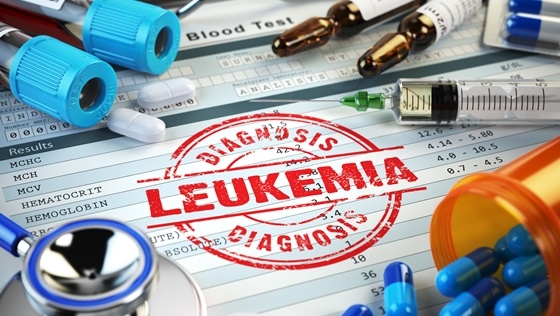
Despite improvements in medical technology, cancer remains one of the most common causes of death among children. Cancer Research UK estimates that there are almost 1,700 new cases of cancer among children each year in the UK and more than 250 deaths annually.
Certain types of cancer are more prevalent amongst children and adolescents including leukaemia, lymphoma, rhabdomyosarcoma, brain or central nervous system tumours, neuroblastoma, Wilms’ tumour, and bone cancer. This article will share some general information about these forms of childhood cancer and help you understand how they are treated.
What causes cancer in children?
Researchers still do not know what causes most childhood cancers. However, they have discovered that inherited genetic mutations cause approximately 5% of cancers in children. These mutations are passed to the child from their parents. Genetic mutations often cause uncontrolled cell growth that leads to cancerous cells developing.
Some studies have identified environmental risk factors for childhood cancers including prenatal exposure to pesticides, prenatal exposure to infectious agents, and parental exposure to cancer-causing chemicals.
The most common types of childhood cancers
Leukaemia
Leukaemia refers to a group of cancers that begin in the bone marrow. These forms of cancer cause an abnormal growth of young white blood cells, referred to as leukaemia cells. This massive influx of immature white blood cells impairs the ability of the body to produce red blood cells. Leukaemia causes a number of symptoms including fever, increased risk of infections, tiredness, bruising, and excessive bleeding. Leukaemia makes a person prone to contracting other illnesses that are potentially fatal.
Scientists believe that both inherited and environmental factors are responsible for causing leukaemia. A number of risk factors have been identified including exposure to toxic chemicals, exposure to radiation, and having Down’s syndrome.
A variety of treatments is available including radiation therapy, chemotherapy, bone marrow transplants, and stem cell therapy. The survival rate for people with leukaemia has quadrupled in the past 40 years. Approximately half of the people diagnosed with leukaemia in the UK will survive for 5 years or more.
Rhabdomyosarcoma
Childhood rhabdomyosarcoma is a type of sarcoma that causes cancerous cells to form in muscle tissue. Sarcoma refers to a group of cancers that affect the bones, connective tissue or soft tissue in the body. Scientists have identified a number of genetic conditions that increase the risk of childhood rhabdomyosarcoma.
Rhabdomyosarcoma is the most common type of soft tissue cancer affecting children and adolescents. The most common sign of rhabdomyosarcoma is a lump in the muscle tissue that continues to get bigger. Other symptoms may include bulging of the eyes, headaches, blood in the urine, or trouble urinating.
This form of cancer is usually treated with surgery, radiation therapy and/or chemotherapy. Clinical trials for treating rhabdomyosarcoma with stem cells are also underway.
Neuroblastoma
Neuroblastoma is a form of cancer that affects the early nerve cells. It can start while a child is still in the womb. Neuroblastoma usually affects children who are younger than 10 years of age.
This form of cancer can be found anywhere within the sympathetic nervous system. It is most commonly found in the adrenal glands or the sympathetic nerve ganglia in the abdomen. Neuroblastoma can behave very differently — in some case spreading rapidly through the body while in other cases progressing very slowly. In some cases, the cancer cells will go away without any medical intervention.
A range of treatments are available for neuroblastoma including chemotherapy, surgery, radiation therapy, and stem cell transplants.
Wilms tumour (Nephroblastoma)
This is a form of cancer that affects the kidneys. The symptoms of this disease include a swollen abdomen, loss of appetite, fever, nausea, high blood pressure and abdominal pain. It has a high survival rate, with more than 90% of patients surviving more than 5 years.
It is usually treated by surgery to remove the tumour, followed by radiation therapy. Researchers are also exploring the use of cord blood stem cells to help treat this condition.
Lymphoma
Lymphoma occurs when blood cell tumours develop from lymphatic cells. The symptoms of this disease include enlarged lymph nodes, weight loss, tiredness, excessive sweating, fever, and itching.
There are many types of lymphoma, which are categorised as Hodgkin’s lymphoma and non-Hodgkins lymphoma. Risk factors for this form of cancer include exposure to pesticides, taking immunosuppressant drugs, and infection with the Epstein–Barr virus.
Treatment usually involves chemotherapy, radiation therapy, targeted therapy, and surgery. Researchers are exploring the use of stem cell therapy in conjunction with high-dose chemotherapy.
Bone Cancer (Childhood osteosarcoma)
Bone cancer is one of the most common types of childhood cancers. The first signs of this form of cancer are usually pain, swelling and difficulty moving.
The two most common forms of bone cancer in children are childhood osteosarcoma and Ewing sarcoma of the bone. Childhood osteosarcoma usually occurs at the ends of the fastest growing bones in a child’s body — the thigh bone (femur), shin bone (tibia) or upper arm bone (humerus). Ewing sarcoma can occur in almost every bone in the body.
Bone cancer is usually treated with chemotherapy, surgery and/or radiation therapy. The prognosis of a child with bone cancer can vary greatly, largely depending on how early the cancer was diagnosed.
Sources:
Death among children and adolescents: MedlinePlus Medical Encyclopedia. (2016). Medlineplus.gov. Retrieved 29 August 2016, from https://medlineplus.gov/ency/article/001915.htm
Children’s cancer statistics. (2015). Cancer Research UK. Retrieved 29 August 2016, from http://www.cancerresearchuk.org/health-professional/cancer-statistics/childrens-cancers
{{cta(’67c42548-ae7a-4f21-bbcb-59a71252963b’)}}


